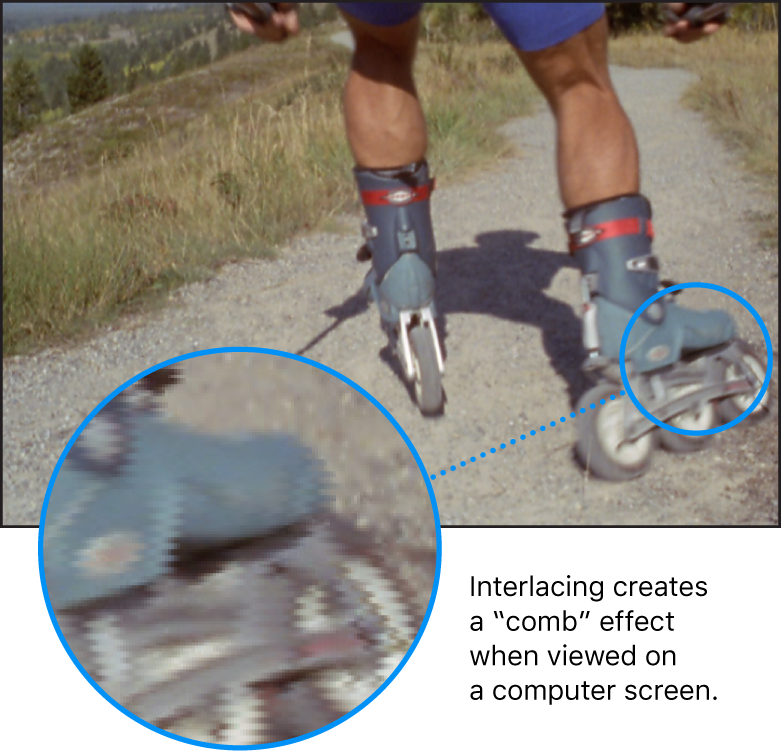interlaced video
Video to be played on traditional NTSC or PAL televisions is stored using an interlaced frame rate. Each frame is actually made up of two half-frames called fields. Each field contains half the frame lines; the odd (or upper) field contains lines 1, 3, 5, 7, 9 and so on, and the even (or lower) field contains lines 2, 4, 6, 8, 10, and so on. When the video is played back, the TV displays the fields in an alternating pattern, which creates an effective illusion of smooth movement. Viewing interlaced video on a computer screen that displays both fields simultaneously may reveal a combing effect.
You can deinterlace, or remove the fields from an interlaced video clip, by converting it to a progressive frame rate, which stores the video in a series of whole frames instead these two fields.
